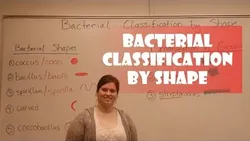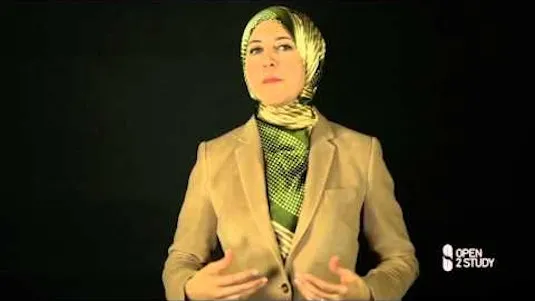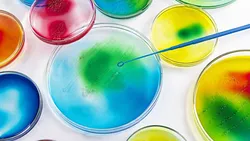
Microbiology Study Videos 
This course provides an overview of the different types of microorganisms, including bacteria, viruses, fungi, prions, and paramecia. It covers topics such as bacterial classification by shape, the differences between gram positive and gram negative bacteria, and the structure of paramecia. Additionally, it explores fungal hyphae, including septate, coencytic, and pseudohyphae, as well as prions. ▼
ADVERTISEMENT
Course Feature
![]() Cost:
Cost:
Free
![]() Provider:
Provider:
Youtube
![]() Certificate:
Certificate:
Paid Certification
![]() Language:
Language:
English
![]() Start Date:
Start Date:
On-Demand
Course Overview
❗The content presented here is sourced directly from Youtube platform. For comprehensive course details, including enrollment information, simply click on the 'Go to class' link on our website.
Updated in [February 21st, 2023]
What does this course tell?
(Please note that the following overview content is from the original platform)
Bacteria Classification by Shape.
Gram Positive and Gram Negative Bacteria.
Introduction to Viruses.
Introduction to Fungal Pathogens.
Fungal Hyphae: Septate, Coencytic, and Pseudohyphae.
Prions.
Paramecium Structure.
Bacterial Growth Curve and Binary Fission.
Bacteria Temperature Preferences.
Bacteria pH Requirements (acidophiles, neutrophiles, and alkaliphiles).
Bacteria Oxygen Requirements.
Aerobic Respiration in Bacteria.
Heterotrophs, Autotrophs, Phototrophs, and Chemotrophs.
Lithotrophs vs Organotrophs.
Heterocysts: Nitrogen Fixation in Cyanonacteria.
Gram Stain Procedure.
Acid-Fast Stain.
Endospores.
Endospore Formation (Sporulation).
Endospore Stain Procedure (Moeller and Schaeffer-Fulton Methods).
Capsule Stain.
Acidic vs. Basic Stains in Microbiology.
Flagella Arrangements.
Axial Filaments in Spirochetes.
Flagella Stain.
Transformation in Bacteria.
Conjugation in Bacteria.
Bernard Davis's U-Tube Experiment (Conjugation).
Transduction.
Coupled Transcription and Translation.
Most Probable Number (MPN) Method.
MIC Determination by Linear Regression.
Broad vs. Narrow Spectrum Antibiotics.
Bacteriostatic vs. Bactericidal Antibiotics.
When NOT to Use Bacteriostatic Antibiotics.
Antibiotic Resistant Bacteria.
Antibiograms.
Clavulanic Acid (Clavulanate) and Penicillin Protection.
Koch's Postulates.
Emerging Diseases: New Host Species.
Phagocytosis.
Pathogen Replication inside Macrophages.
Helicobacter pylori and Survival in Human Stomach.
Lifecycle of Hookworm.
Lifecycle of Schistosomiasis Parasite.
Types of Leprosy: Lepromatous and Tuberculoid.
Histoplasmosis (Histoplasma capsulatum) Transmission and Infection.
Cytopathic Effects.
How Mouth Bacteria Cause CAVITIES.
Catalase Test.
Oxidase Test.
Coagulase Test.
Disk Diffusion Test (Kirby-Bauer Test).
Citrate Test.
DNAse Test (DNA Hydrolysis Test).
Lecithinase Test.
Indole Test.
Hippurate Hydrolysis Test.
Mannitol Salt Agar (MSA).
Eosin Methylene Blue Agar (EMB Agar).
MacConkey Agar.
Snyder Test Agar.
Lipase Test with Spirit Blue Agar.
Akinetes.
Viroid / Virusoid / Virus / Prion (PLUS 10 MORE RELATED VOCAB).
Quadrant Streak (Streak Plate Method).
Axenic Culture in Microbiology.
We consider the value of this course from multiple aspects, and finally summarize it for you from three aspects: personal skills, career development, and further study:
(Kindly be aware that our content is optimized by AI tools while also undergoing moderation carefully from our editorial staff.)
1. You can learn about the different types of bacteria, including their shapes, Gram positive and Gram negative, and their temperature, pH, and oxygen requirements.
2. You can learn about the different types of viruses, fungi, and prions, as well as their structure and pathogenicity.
3. You can learn about the different types of stains used in microbiology, such as Gram stain, acid-fast stain, endospore stain, and capsule stain.
4. You can learn about the different types of metabolic processes in bacteria, such as heterotrophs, autotrophs, phototrophs, and chemotrophs, as well as lithotrophs and organotrophs.
5. You can learn about the different types of bacterial growth, binary fission, and the bacterial growth curve. You can also learn about the different types of bacterial transformation, conjugation, and transduction.
[Applications]
It is recommended that those who have completed the Microbiology Study Videos course apply their knowledge to further their understanding of the subject. They can do this by researching topics related to the course, such as the different types of bacteria, the different types of viruses, and the different types of fungi. They can also practice the various laboratory techniques discussed in the course, such as the Gram stain, the acid-fast stain, and the endospore stain. Additionally, they can explore the different types of antibiotics and their effects on bacteria, as well as the different types of tests used to identify bacteria. Finally, they can practice culturing bacteria and other microorganisms in order to gain a better understanding of their growth and development.
[Career Paths]
1. Microbiologist: Microbiologists study the growth, structure, development, and other characteristics of microscopic organisms such as bacteria, algae, and fungi. They use a variety of techniques, such as cell culture, microscopy, and molecular biology, to study the structure and function of these organisms. Microbiologists are increasingly in demand as the need for new treatments and cures for diseases grows.
2. Clinical Microbiologist: Clinical microbiologists are responsible for the diagnosis and treatment of infectious diseases. They use a variety of laboratory techniques to identify and characterize microorganisms, and they develop and implement strategies to control the spread of infectious diseases. Clinical microbiologists are also involved in research to develop new treatments and cures for diseases.
3. Infectious Disease Specialist: Infectious disease specialists are medical doctors who specialize in the diagnosis and treatment of infectious diseases. They use a variety of laboratory tests and techniques to diagnose and treat patients with infectious diseases. They also work with public health officials to develop strategies to control the spread of infectious diseases.
4. Epidemiologist: Epidemiologists are public health professionals who study the patterns, causes, and effects of diseases in populations. They use a variety of methods, such as surveys, interviews, and laboratory tests, to collect data and analyze it to identify trends and develop strategies to control the spread of diseases. Epidemiologists are increasingly in demand as the need for new treatments and cures for diseases grows.
Course Provider

Provider Youtube's Stats at AZClass
Over 100+ Best Educational YouTube Channels in 2023.
Best educational YouTube channels for college students, including Crash Course, Khan Academy, etc.
AZ Class hope that this free Youtube course can help your Microbiology skills no matter in career or in further education. Even if you are only slightly interested, you can take Microbiology Study Videos course with confidence!
Discussion and Reviews
0.0 (Based on 0 reviews)
Explore Similar Online Courses

Inclusive education: knowing what we mean (Wales)

Grafana Master Course - Time Series Data Visualization

Python for Informatics: Exploring Information

Social Network Analysis

Introduction to Systematic Review and Meta-Analysis

The Analytics Edge

DCO042 - Python For Informatics

Causal Diagrams: Draw Your Assumptions Before Your Conclusions

Whole genome sequencing of bacterial genomes - tools and applications

Microbiology and Forensic Science

Microbiology Textbook


Start your review of Microbiology Study Videos